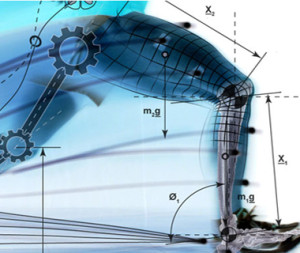A runner’s greatest energy expense is spent in a vertical plane (opposing gravity). A runner has to leap 7.5 centimeters in the air (3”) to cover one body length in distance. A typically well trained marathon runner’s stride length is between 75-90% of their total height.
Here are some interesting deal points:
- Scientists who measured joint kinematics at the hip, knee and ankle found that force was dramatically reduced when cadence increased by 10%. When cadence was slowed by 10% energy absorbed at all three joints were dramatically increased which plays heavily into the potential for injury.
- By increasing cadence and reducing stride (over striding) by 10% (optimal 180-190 strides per minute)
- You will reduce time in contact with the ground by 32%
- You will reduce vertical displacement during contact phase by 76%
- You will increase spring stiffness by 100%
The studies went on to determine what happens when a runner fatigues: Form changes, more time spent in contact with the ground, lower propulsive force. Analyzing the change in force/time relationship produced other conclusions:
A slow shuffling run consumes more energy than quicker springier turn over.
https://www.youtube.com/watch?v=cY_zHwaAd_c&list=UU5Zu7MBn4PvVr4bZ1z4SWEw
Research published in 2011 by Heiderscheit et al. indicates that running at a 5-10% higher rate of cadence (than your norm for a given pace) results in a reduction of impact and therefore loading on the knee and hip joints, a decrease the amount of vertical displacement of the centre of mass (bounce), a shortening in stride length, and created less braking force at contact with the ground.
The Key to running more economically is in reducing vertical forces and vertical energy expense while maximizing horizontal velocity.

